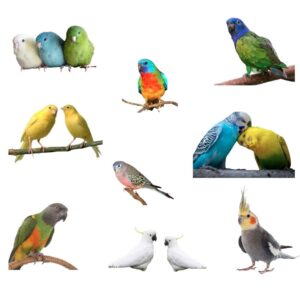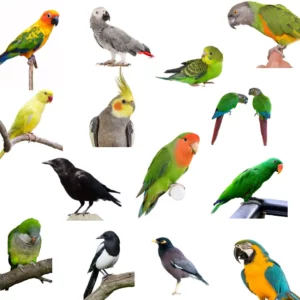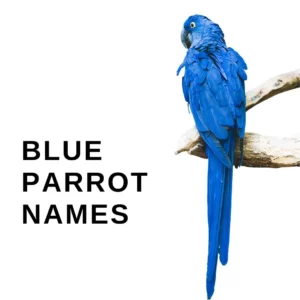Small parrots are fun, gorges and joyous pets. The majority of small parrots have traits that make us fall in love:
- Intelligence
- Communication
- Friendliness
- Affection
- Environmental adaptability
But they are also social and require consistent care, so choosing a pet bird can be challenging.
To help you find the best one for your household, I’ve listed the 10 best types of small parrots for pets. Let’s check them out.
What is the best small parrot to own?
Cockatiels
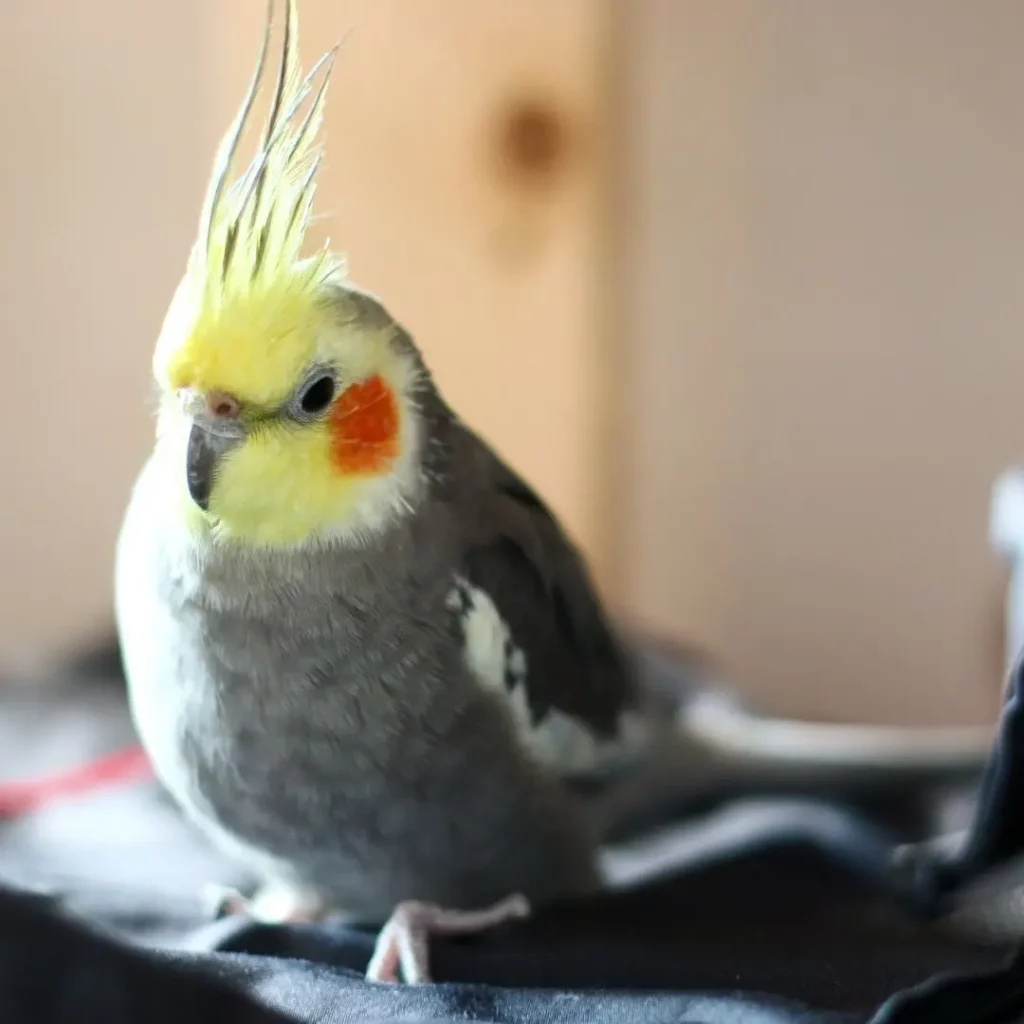
Cockatiels are known for their gentle nature and feather crests on their heads, giving them that distinguished appearance. They thrive on social interaction and bond deeply with their owners, eagerly seeking attention and companionship.
Cockatiels aren’t prone to excessive biting or aggression, unlike other parrot species. They enjoy petting and cuddling, and their soft, fluffy feathers are a delight to touch.
Another good reason to choose Cockatiels is their intellect – people train these cheerful birdies to perform a variety of tricks, including whistling tunes, mimicking sounds, and even fetching objects!
Their trainability makes them a rewarding and engaging companion, providing hours of entertainment and amusement.
Compared to larger parrot species, cockatiels are relatively low-maintenance pets. While they appreciate plenty of out-of-cage time for exercise and interaction, they don’t necessarily demand constant supervision.
Budgerigars (Budgies)
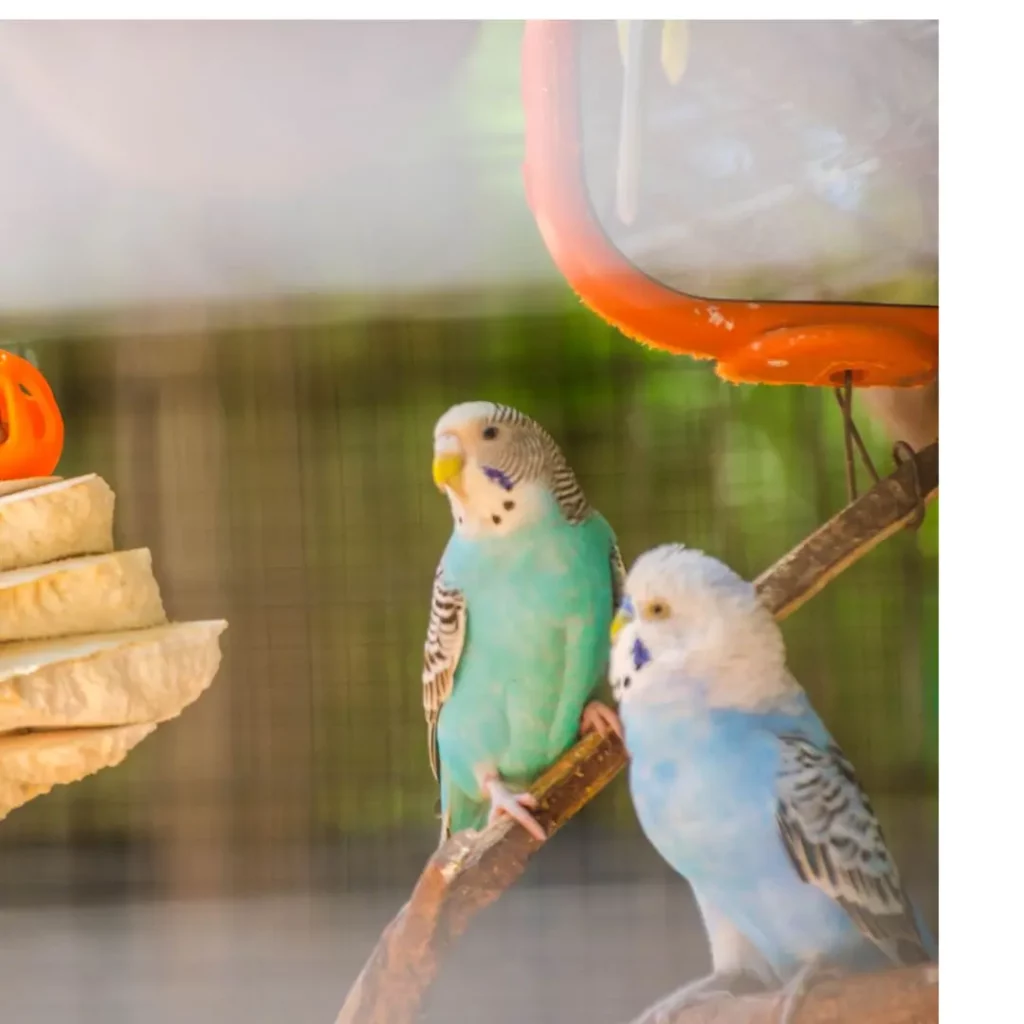
Budgerigars, also known as Budgies, are some of the most popular parrots and make excellent companions for those seeking small parrots with vibrant personalities and relatively low-maintenance care requirements.
Their remarkable ability to mimic sounds, including human speech, is astounding. Their ability to mimic intonation and context further enhances their communication skills, making them truly engaging companions and one of the best examples of birds that talk.
Here are some key reasons why Budgies are a great choice for pets:
- Budgies are known for their affectionate and social nature, forming strong bonds with their owners. They thrive on interaction and enjoy spending time with their human companions, often mimicking words and sounds.
- They’re energetic and playful birds, requiring ample exercise and mental stimulation opportunities. They love to play with toys, explore their cages, and even learn tricks.
- Budgies are known for their ability to mimic human speech, sometimes learning words, phrases, and even short songs. This adds an extra layer of interaction and entertainment to their companionship.
- With proper care, Budgies can live for an average of five to eight years. But with proper care, they can live for 15 years or more, making them a perfect choice for long-lived pets.
If you’re considering welcoming a Budgie into your home, be prepared to provide them with plenty of toys and extra interaction.
Conures
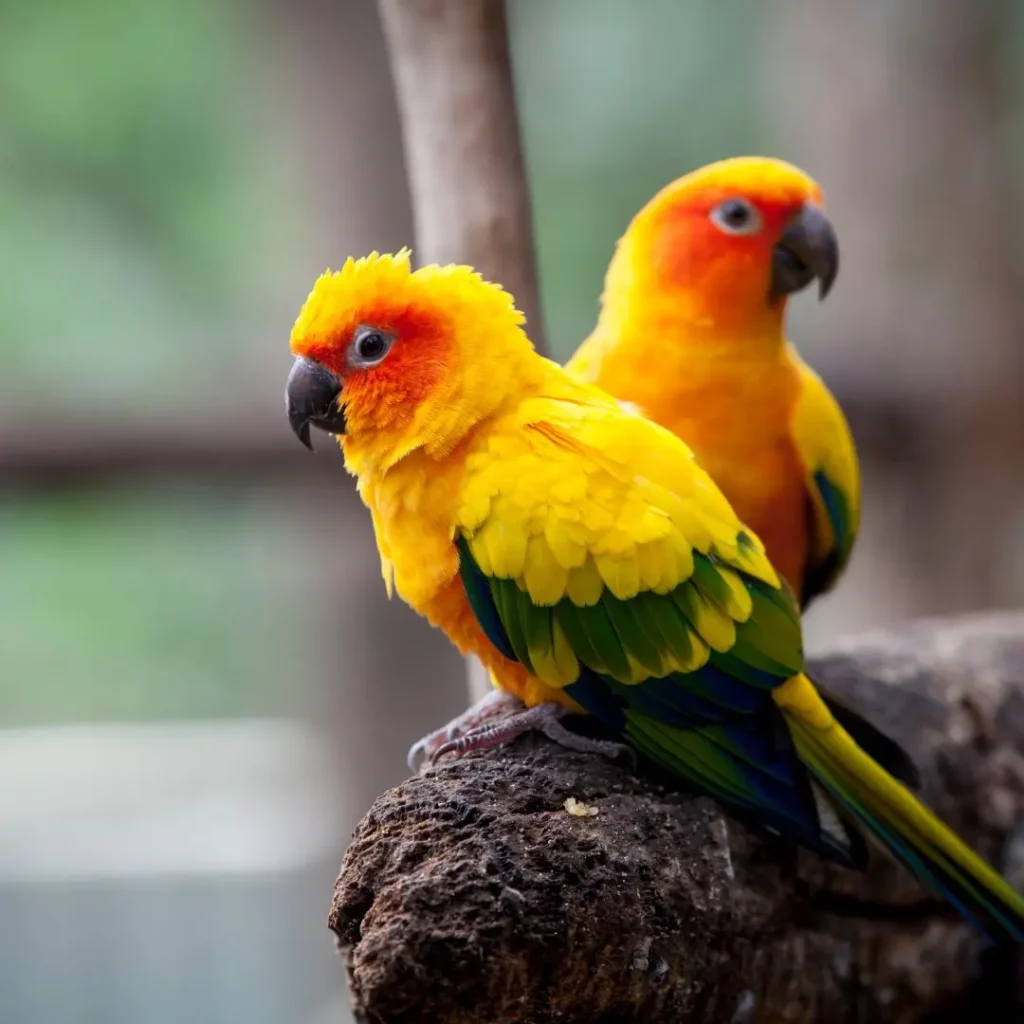
Conure parrots, known for their vibrant plumage, playful personalities, and impressive vocalizations, are captivating companions that can bring joy and laughter into homes.
Conures are remarkably social birds that thrive on companionship. Their playful nature is evident in their love for exploring their surroundings, treats, and engaging in various activities.
They often form strong bonds with their owners, seeking cuddles, head scratches, and opportunities to play – similar to Cockatiels.
A Conure parrot is also an intellectual birdie, often exhibiting problem-solving abilities and a knack for learning tricks.
However, their beauty is another reason they’re among the most popular pet choices. Conure parrots, especially Sun Conure, are one of the most colorful parrots in the world.
Some popular and colorful conures are Sun Conure, Green-Cheeked Conure, and Blue-Crowned Conure.
Although every small parrot is social, some more than others, Sun Conures are among the friendliest who need constant attention. So, if you’re not ready to spend time bonding with them, they can become stressed out and angry with you – and we don’t want that.
So, if you or your family are often outside your home, opt for a more dependent small parrot instead.
Pro tip: It’s critical to get Sun Conures in groups, so get at least a pair of them if you decide to go for these cuties.
Lovebirds
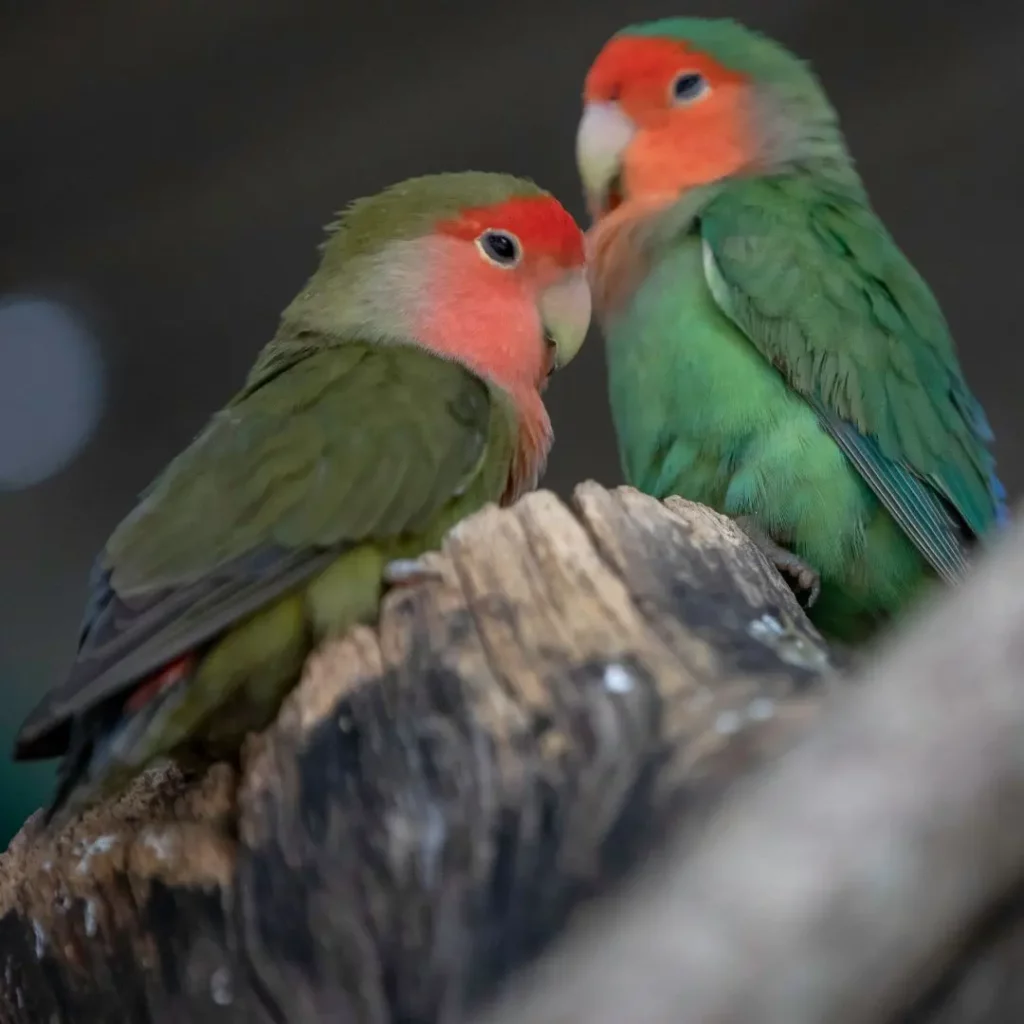
Lovebird parrots have an affectionate nature and impressive vocalizations and can make wonderful companions for those seeking an engaging and lively pet bird. They’re relatively smaller than other parrots, making them suitable for homes with limited space.
Lovebirds, as their name suggests, can easily and quickly form strong bonds with other companions and their owners. They often seek cuddles, head scratches, and opportunities to play, making them delightful companions for kids and those who enjoy close contact with their pets.
These small cuties are playful creatures, always eager to explore their surroundings and engage in activities. They enjoy foraging for treats, playing with toys, engaging in interactive games with their owners, and sometimes even wrestling each other for fun!
They’re also known for their impressive vocal abilities, ranging from chirps and whistles to mimicking human speech. They may not be as vocal as Budgies, Cockatiels, and some larger birds, such as African Grays or Macaws.
Due to the excessive noise they make, they’re not the best option if you want a more quiet, mellow parrot.
Also, Lovebirds can be quite sensitive to poor, imbalanced diets – similar to Eclectus parrots. A Lovebird’s diet requires:
Fresh fruits – apples, pears, and bananas.
Vegetables – spinach, broccoli, and carrots.
High-quality seed mix – various seeds, including millet, canary seed, oats, and smaller amounts of sunflower seeds.
Rainbow Lorikeets
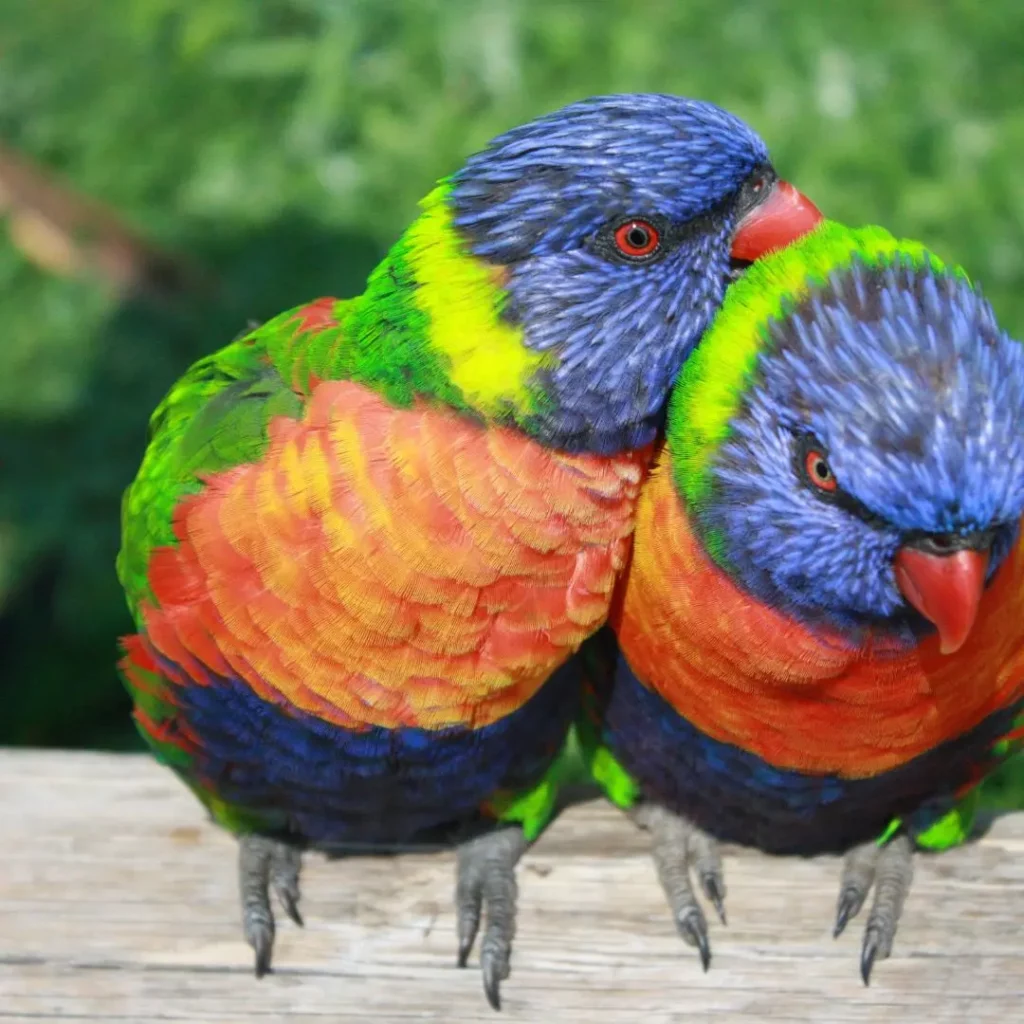
Lorikeets are known for their unique appearance due to their vibrant colors and brush-tipped tongues. Their active nature and inquisitive minds demand attention and stimulation, making them suitable for experienced bird owners.
Lorikeets are distinguished by their specialized brush-tipped tongues, adapted for their nectar-based diet. These unique tongues allow them to efficiently extract nectar from flowers, making them one of the most fascinating parrots.
While lorikeets make wonderful pets, they require specialized care and attention. Their specialized diet necessitates a liquid nectar substitute, which can be messy and require careful preparation.
So be prepared to spend extra time interacting and preparing food for your Lorries if you decide to get them as pets.
On the other hand, if you have enough time, they can be really fun and playful birds who will often jump and play around whenever they’re excited – a playful and fun type of small parrot to have!
Red Lories
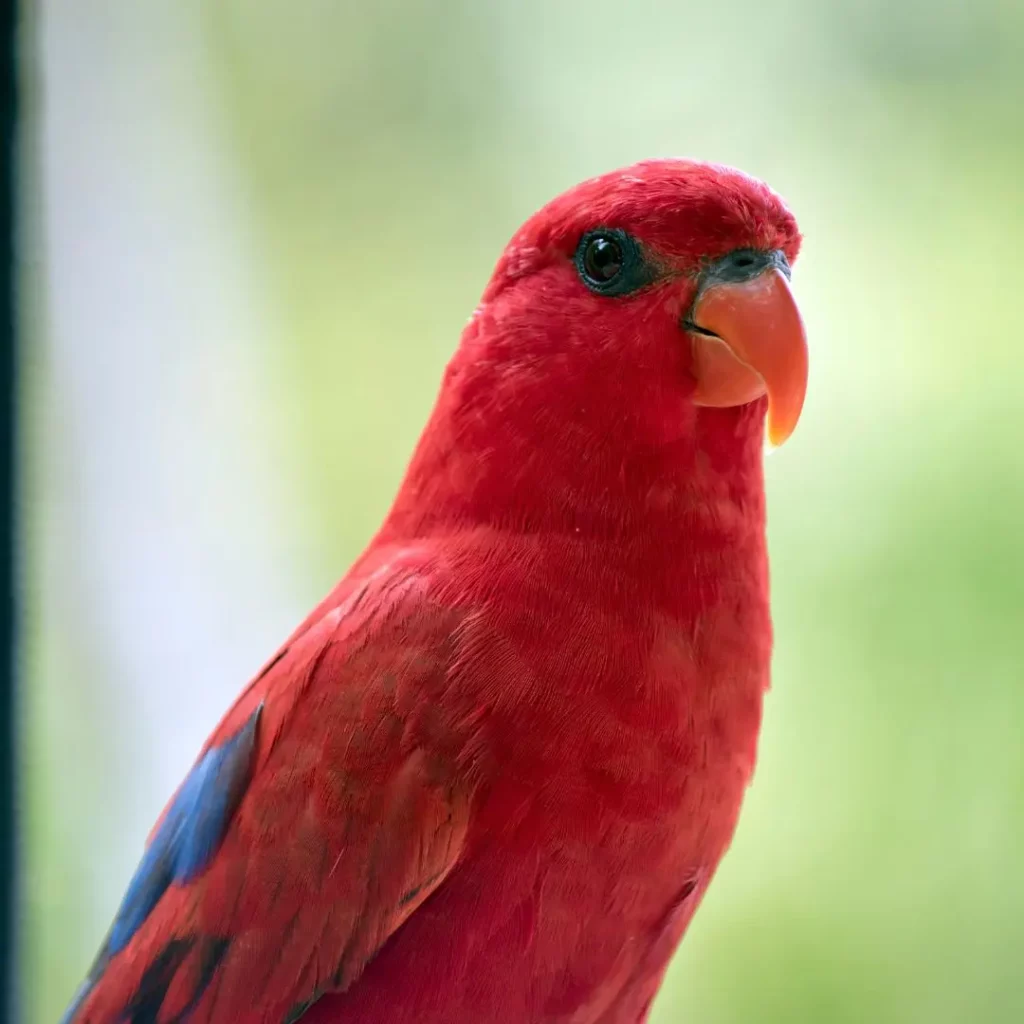
A Red Lory is a cheerful and super active bird, similar to its Rainbow Lorikeets cousins. They’re intelligent, and always up for an adventure, so new parrot owners must watch them when they’re out of their cage. Red Lories thrive on attention and may sometimes prefer being the only bird in the house.
Red Lories are quite vocal, chatting, squawking, and screeching throughout the day. They can also mimic words and phrases – they can be quite loud, so they’re most suitable for households with multiple members and don’t mind the noise.
If you decide to get a Red Lory, on any other species of Lorries, keep in mind that they’re highly energetic birds that demand a spacious enclosure to accommodate their need for flight, climbing, and play space within their cage.
Also, spending quality time outside their cage is critical for these playful and social birds to stay healthy and happy.
Quaker Parrots
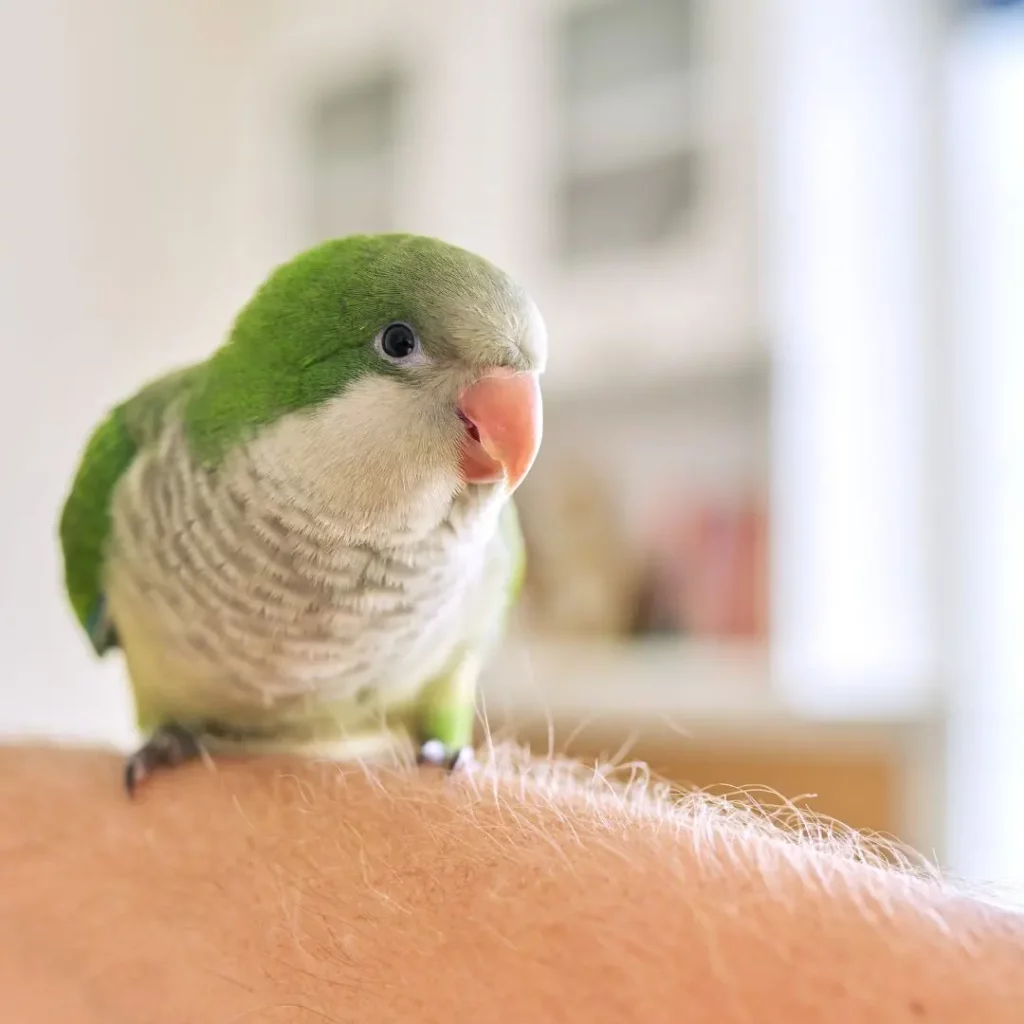
A Quaker Parrot, also known as Monk Parakeet, is well-known for building strong bonds with its fellow companions – it’s one of the most loyal and friendliest parrots. They’re also known as the only parrots that build nests!
Often, a flock of Quakers will build their nests next to each other to create a safer community. They can spend a lot of time building them; sometimes, their nests even have small rooms, reflecting their incredible intelligence, playfulness, and motivational spirit.
Quakers are quite naturally confident and social birds, making them one of the more entertaining pet birds.
They’re also known for their impressive mimicking and talking abilities. They can learn to mimic various sounds in their surroundings, melodies, and even laughter!
These cuties are some of the most affectionate birds, who enjoy chattering with their humans and cuddling and being petted – one of the best birds for beginners.
However, they may be unable to keep the longer conversations going like larger birds such as African Grays.
Parrotlets
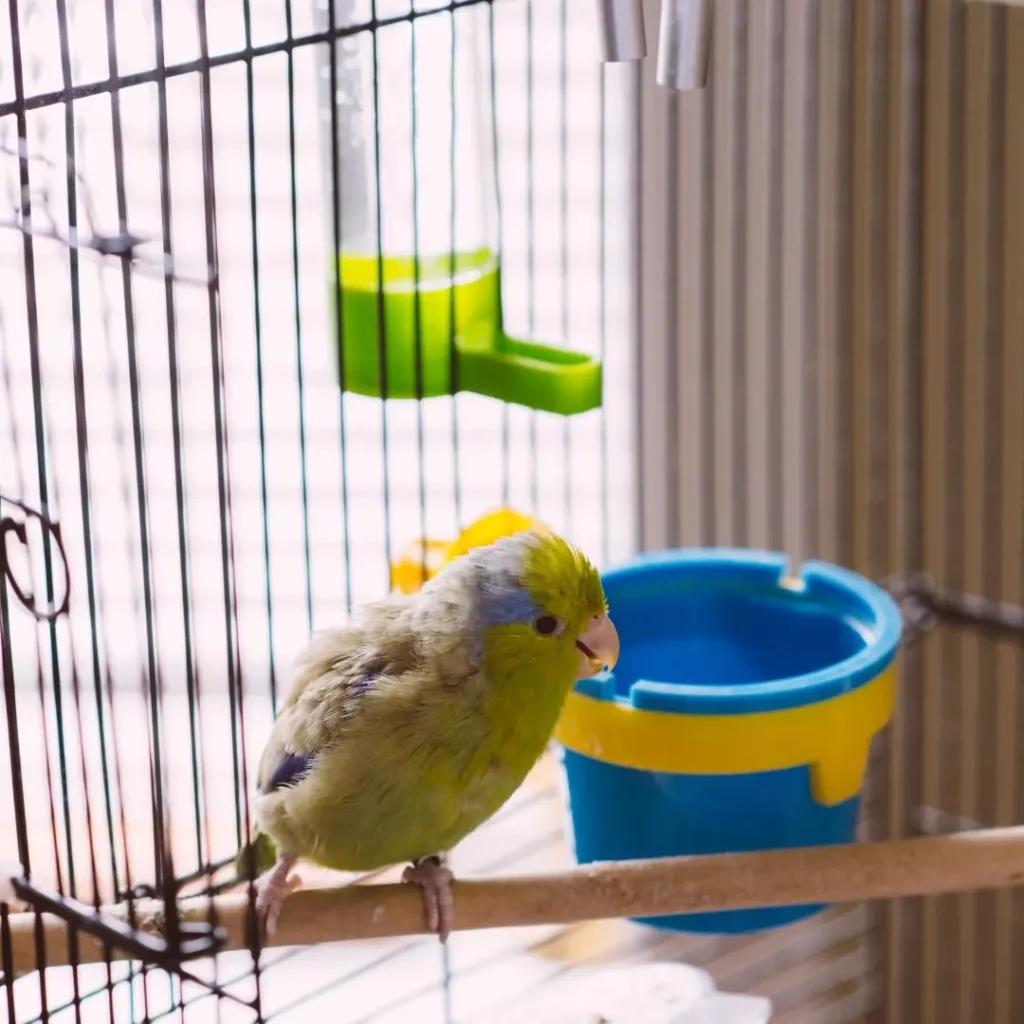
A Parrotlet, also known as the pocket parrot, is one of the smallest parrots in the world. Their playful personalities make them delightful companions for individuals and families seeking a lively and engaging pet.
Measuring around five inches/10cm in length, parrotlets are among the smallest parrot species, making them well-suited for homes with limited space. Parrotlets are adaptable to different living environments, making them one of the common choices among bird pets.
With patience and positive reinforcement training, parrotlets can be taught tricks, perform simple tasks, and even learn to grasp and use basic human phrases.
Parrotlets are also quite vocal, so be prepared for lively chatters if you plan to get them for pets.
Ringnecked (aka Rose-ringed) Parakeets
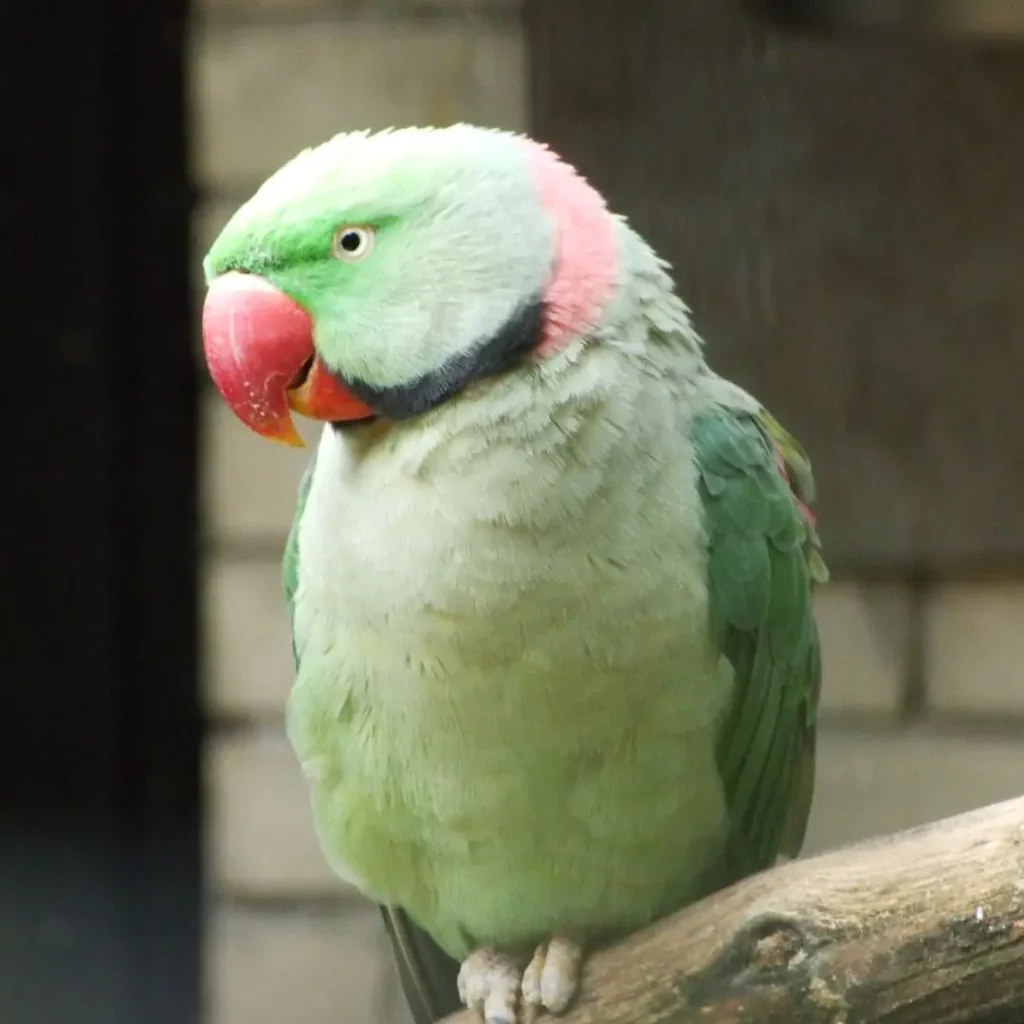
A Ring-necked Parakeet is small in size, but due to their long tails, which can extend up to 16 inches/40.6 cm, many avian enthusiasts consider them medium-sized. Either way, they’re among smaller pet parakeets who are playful, vocal, and smart.
They’re one of the more talkative types of parrots. But a Ring-necked Parakeet can take a few months or even a year to get comfortable and start talking with its owners.
On the other hand, once they start communicating and mimicking, they’re unstoppable. They learn fast, and the ones that talk can often use more than a hundred words and phrases. They’re known for their soft, high-pitched vocalizations that some people find comical.
But remember that these birdies are recommended for experienced bird owners since they’re not as affectionate as other pet birds.
For instance, Ringnecks are among the most intelligent of small parrots. So, they can easily get bored if not provided with enough mental stimulation. This boredom can manifest in destructive behaviors like chewing and biting.
Also, during adolescence, they undergo a brief bluffing or mock aggression phase. This behavior is normal and usually subsides within a few weeks or months.
However, with proper care and attention, Indian Ringneck Parakeets always develop sweet and charming personalities.
Amazon Parrot
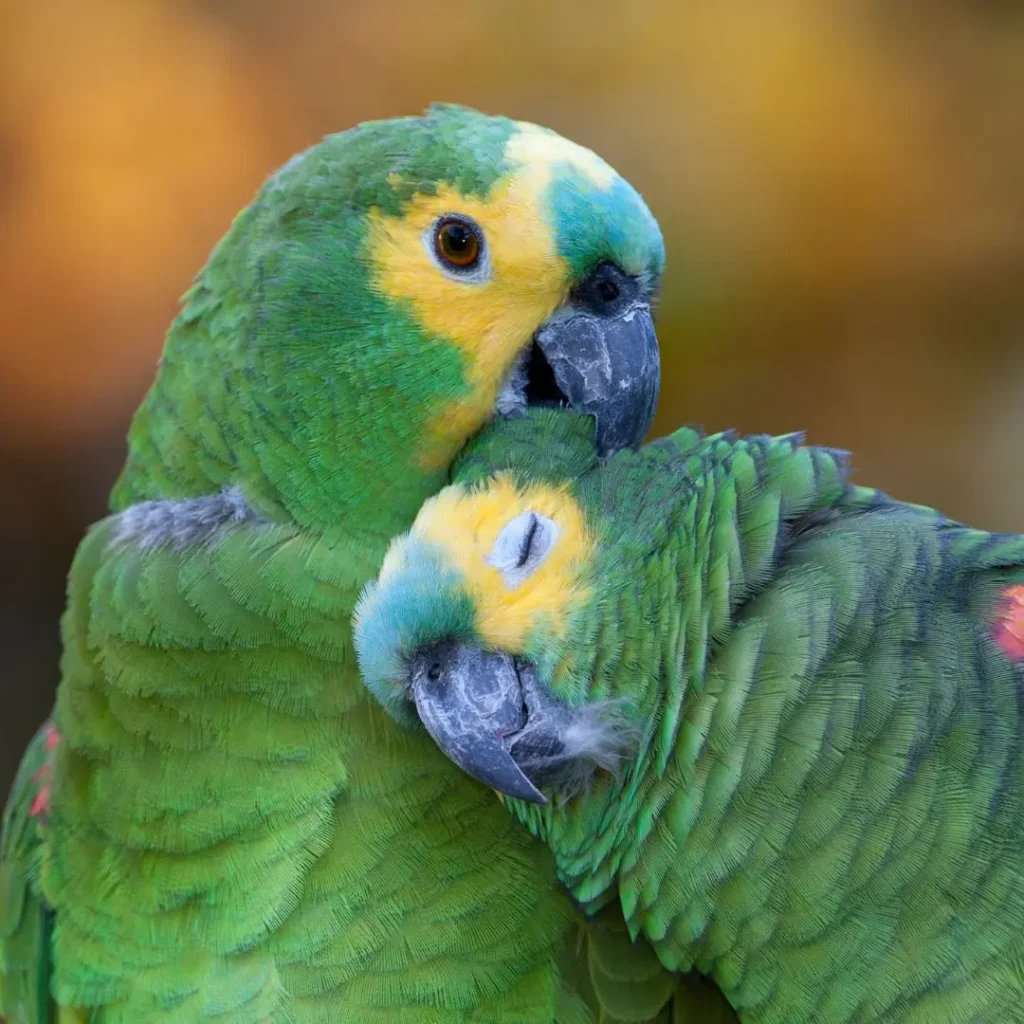
Amazons are lively and amusing birds, born entertainers. They thrive on being in the company of their owners and happily show off to get extra attention. These loving birdies are not only chatterboxes but also talented singers – they’re one of the parrots that often sing melodies or imitate whistles they hear, similar to canaries.
So, an Amazon parrot can make noise frequently and get quite loud. Due to their vocal nature, they may not be the best fit for living in small yet crowded places, such as apartment buildings.
But what makes these parrots catch the attention of bird enthusiasts is their appearance, as they’re one of the brightest parrots with beautiful hues. These birds are known for their striking colors, ranging from brilliant greens and blues to bold yellows and reds.
What Is the Best Small Parrot?
The short answer is Budgies (or Budgerigars). Although it all depends on your needs and conditions, these little fellows are among the most popular small parrots in the world.
Here are a few reasons why you should consider a Budgie, especially if you’re a beginner:
- Super easy to connect
- Talkative birds – though other small parrots have more developed talking abilities
- Intelligent birds – they can learn quickly and are capable of all kinds of activities (talking and mimicking, doing tricks, solving puzzles, etc)
- Relatively easy to maintain compared to other small parrots
What Is the Easiest Parrot to Maintain?
The short answer would be Cockatiels, Budgies, and Conures. All parrots require quite some level of maintenance, but in comparison, these are some of the easiest small parrots to take care of and maintain.
Here are a few reasons why:
- They don’t require a special diet like the Rainbow Lorikeet or Red Lory, for example, nectar.
- They’re less likely to become aggressive and experience ‘’feather plucking’’ at some point, meaning there’s less chance of covering their surroundings in plucked feathers.
- They’re super friendly, making it easy to understand and connect with them.
If you’re concerned about getting your first (or new) small parrot, here are some of the most important equipment to consider:
- Proper-sized flight cage
- Bird carrier
- Natural perches
- Food bowls (opt for stainless steel ones because it’s a more hygienic option)
- Rope perch (optional)
- Platform perch
- Bird toys
- Bird treats
- Outside play stand
- Organic pellets
- Vegetable/fruit chop
- Food processor
What Small Parrot Lives the Longest?
The average lifespan of a budgie, also known as a budgerigar, is around five to eight years. However, with proper care and attention, domesticated budgies can live much longer, often reaching the age of 15 or beyond.
This is primarily due to the stable and protected environment they enjoy in captivity, as opposed to the harsh realities of the wild, where predators, disease, and food scarcity significantly reduce their lifespan.
My Senior Paws is a participant in the Amazon Services LLC Associates Program, an affiliate advertising program designed to provide a means for sites to earn advertising fees by advertising and linking to Amazon.com. We also participate in other affiliate programs which compensate us for referring traffic.

